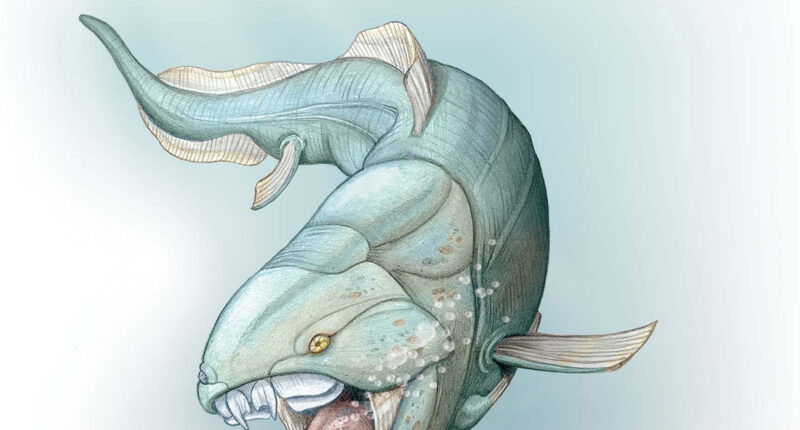SCIENTISTS have uncovered a sea beast that was a cross between a Great White shark and an Amazonian catfish.
Dubbed Dunkleosteus terrelli, the creature roamed the seas during the Devonian period, around 415 million to 360 million years ago.
The underwater animal had a bite more powerful than any fish that ever lived, according to new research.
In fact, its jaw power was likely more than 1,100 pounds of force per bite.
Researchers likened the extinct sea beast to today’s underwater man-eaters that can swallow people whole.
Lead author Russell Engelman, a Ph.D. student at Case Western Reserve University, Ohio, said: “Dunkleosteus has often been assumed to function like a great white shark.
“But as we learn more about this fish it might be more accurate to describe it as a mix of shark, grouper, viperfish, tuna, and piraiba – a type of giant predatory Amazonian catfish, well known to fans of Animal Planet’s River Monsters.”
Dunkleosteus belonged to an early group known as placoderms, aquatic animals that were covered in articulated armored plates.
Compared to sharks, they had much larger mouths, but the length of these creatures remains disputed.
Engelman said: “Length estimates of five to 10 meters have been cited for Dunkleosteus for years.
Most read in News Tech
“But no one seems to have checked these methods statistically or tested if they produce reliable or reasonable results in arthrodires.”
Some experts believe that the creature likely had a shorter body more similar to sharks.
“Dunkleosteus simply had a much larger mouth relative to its body length than sharks, with relative mouth width more similar to predatory catfishes,” Engleman said.
As apex predators, calculating the body length of the creature is imperative to figuring out their life habits and the ecology of the Devonian period in general.
And despite placoderms often being reconstructed based on comparisons with sharks, the two may have behaved differently than previously thought.
Engelman said: “Mouth size is probably the biggest factor in determining the largest prey a fish can eat.
“The results suggest placoderms were hitting far above their weight class.”











